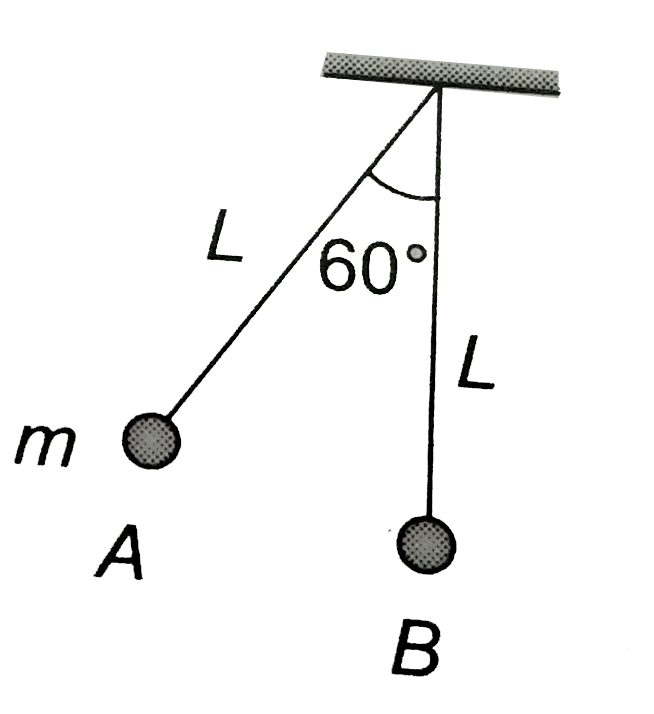Object A strikes the stationary object B with a certain give speed u head-on in an elastic collision. The mass of A is fixed, you may only choose the mass of B appropriately for following cases. Then after the collision:
for B to have the greatest speed, choose mB=mA
for B to have the greatest momentum, choose mB<<mA
for B to have the greatest speed, choose mB<<mA
for B to have the greatest kinetic energy, choose mB=mA
The correct Answer is:C, D
(D) is true option because VA=mA−mBmA+mBUA
VB=2mAmA+mBUA
Topper's Solved these Questions
- MASTER PRACTICE PROBLEMBook:BANSALChapter:MASTER PRACTICE PROBLEMExercise:Subjective
Explore 107 Videos
- MASTER PRACTICE PROBLEMBook:BANSALChapter:MASTER PRACTICE PROBLEMExercise:Additional topic
Explore 70 Videos
- MASTER PRACTICE PROBLEMBook:BANSALChapter:MASTER PRACTICE PROBLEMExercise:Reasoning
Explore 75 Videos
- FLUID MECHANICSBook:BANSALChapter:FLUID MECHANICSExercise:PYQS AIEEE
Explore 10 Videos
- SEMICONDUCTORSBook:BANSALChapter:SEMICONDUCTORSExercise:CBSE Question
Explore 32 Videos
Similar Questions
Prove that bodies of identical masses exchange their velocities after head-on elastic collision.
View SolutionA neutron moving at a speed v undergoes a head-on elastic collision with a nucleus of mass number A at rest. The ratio of the kinetic energies of the neutron after and before collision is :
View Solution
Knowledge Check
A particle A suffers an oblique elastic collision particle B that is at rest initially. If their masses with a are the same, then after the collision
Atheir KE may be equalBA continues to move in the original direction while B remains at restCthey will move in mutually perpendicular directionsDA comes to rest and B starts rections moving in the direction of the original motion of A2The ball A is reached and it makes head on collision with B. The masses of A and B are same
 AAfter collision , A comes to rest and B moves with velocity of A just before collisionBThe maximum height attained by ball BisL/2CThe maximum angle made by string attached to Bis60∘DAll options are correct
AAfter collision , A comes to rest and B moves with velocity of A just before collisionBThe maximum height attained by ball BisL/2CThe maximum angle made by string attached to Bis60∘DAll options are correctConsider the elastic collision f two bodies A and B of equal mass. Initially B is at rest and A moves with velocity v. After the collision -
Athe body A tracks, its path back with the same speedBthe body A comes to rest and B moves aways in the direction of A' is approach with the velocity vCboth the bodies stick together and are restDB moves with velocity v/2 and A retraces its path with velocity v/2
Ball A of mass m strickes a stationary ball B of mass M and undergoes an elastic collision. After collision bill A has a speed one third of its initial speed. The ratio of M/m is
View SolutionA particle of mass m moving with velocity →V makes a head on elastic collision with another particle of same mass initially at rest. The velocity of the first particle after the collision will be
View SolutionA particle P moving with speed v undergoes a head -on elastic collision with another particle Q of identical mass but at rest. After the collision the collision
View SolutionA ball of mass 'm' moving with speed 'u' undergoes a head-on elastic collision with a ball of mass 'nm' initially at rest. Find the fraction of the incident energy transferred to the second ball.
View SolutionA body of mass M moving with a speed u has a ‘head on’, perfectly elastic collision with a body of mass m initially at rest. If M>>m , the speed of the body of mass m after collision, will be nearly :
View Solution

